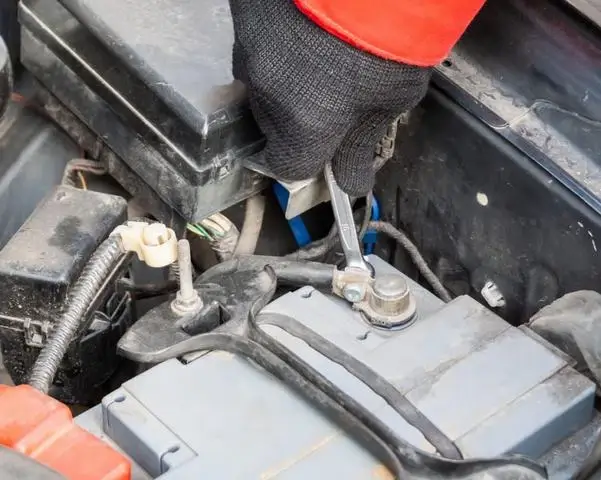Should You Disconnect A Car Battery In Storage?
The pros and cons of disconnecting a car battery to prevent battery discharge
As we discovered during the pandemic, car batteries lose their charge when they’re not used for a long period. In fact, so many car batteries died during the pandemic that the sheer number of replacement batteries needed has caused lead prices to skyrocket, and that’s mostly responsible for the much higher battery prices we see now. Some have proposed that disconnecting a car battery during periods of nonuse is the best way to save your battery. It’s one option, but not a very good one. Here’s why.
All batteries lose power when sitting unused
All batteries, whether AA or lead-acid car batteries, lose their charge over time. Car batteries can lose up to 1% of their charge per day when sitting unused, although the discharge rate is greatly affected by temperature. The higher the ambient temperature, the higher the discharge rate. So disconnecting the battery cables won’t stop the self-discharge.
Car batteries are constantly being drained from the vehicle’s computer systems when the car isn’t being used.
In addition to self-discharge from non-use, all car batteries are drained by the car’s computers. The computers draw power 24/7 to retain adaptive memory, maintain radio and clock settings, and to power the anti-theft system and the remote keyless system.
Between self-discharge and computer usage, most car batteries are severely discharged in 30-45 days of non-use
In other words, modern vehicles are not designed to sit for long periods. You must either drive them or provide some means to keep the battery charged.
Disconnecting a car battery to keep it charged — does it work?
Disconnecting the negative cable from the battery only stops the battery from drawing from the computers. But it doesn’t stop the battery’s self-discharge. As I said earlier, the self-discharge rate is temperature-dependent. If you live in a warm climate and you disconnect the battery cable, you could still wind up with a dead battery in as little as 30-45 days.
There are downsides to disconnecting the car battery
Disconnecting the battery causes the loss of all adaptive memory
Every time you disconnect a car battery, the computer loses all of its adaptive memory. Adaptive memory represents changes to factory programming the computer makes to account for engine wear and tear. The computer will relearn the modifications once you reconnect the battery and drive it through about 10 cold-start cycles. But it may run poorly on the first start after reconnecting, or it may not start at all.
You lose throttle body calibration
The electronic throttle bodies used on modern engines lean to adapt to any carbon buildup that occurs in the throttle bore. So it establishes a new “home” position as the carbon builds up. When you disconnect the battery, the computer/throttle body forgets this home position and you must perform a throttle body relearn procedure to teach it a new home position.
The throttle body relearn can be as simple as turning the key to the RUN position for 3 seconds (Subaru). Or, it may require starting the engine but not driving until the radiator fan kicks in (Honda). On some cars like VW, you may need a scan tool to perform a throttle body relearn.
Using a battery maintainer is a much better option than disconnecting the battery
A battery maintainer keeps your battery at full charge and eliminates the loss of adaptive memory and the need for a throttle body relearn procedure.
Posted on by Rick Muscoplat

